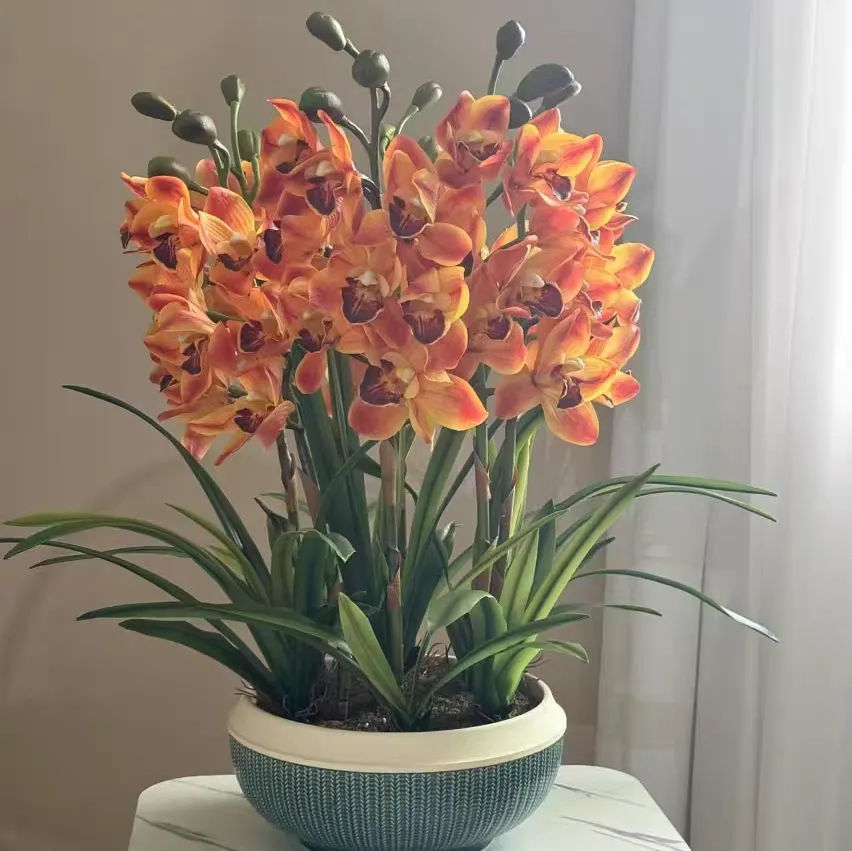For Phalaenopsis orchid growers, it's frustrating to eagerly await a blooming display only to find very few flower buds. Today, let's explore the main causes of sparse flower buds in Phalaenopsis and the corresponding solutions.
### 1. Environmental Factors
Phalaenopsis are highly sensitive to environmental changes. Frequent relocation of the pot disrupts light, humidity, and ventilation, overwhelming the plant and inhibiting flower bud differentiation and development.
**Solution**: Place the orchid in a well-ventilated area with abundant diffused light, and minimize moving it to allow steady bud formation.
### 2. Nutrient Deficiency
Phosphorus is crucial for flower bud differentiation and growth. A phosphorus deficiency prevents the orchid from producing sufficient buds, and existing buds may develop poorly.
**Solution**: 1–2 months before the expected bud differentiation period, apply a high-phosphorus water-soluble fertilizer (e.g., potassium dihydrogen phosphate diluted 1,000–1,500 times) every 10–15 days via soil drenching or foliar spraying to replenish nutrients.
### 3. Temperature Mismanagement
The optimal blooming temperature for Phalaenopsis is 20–28°C. Temperatures above 30°C disrupt growth, while those below 15°C stall flower bud differentiation.
**Solution**:
- In summer (over 30°C): Move the orchid to a cool, ventilated spot; use fans or air conditioning to cool it.
- In winter (below 15°C): Protect it with plastic bags or foam boxes to retain heat.
### 4. Inadequate Light
Light is the energy source for photosynthesis. Insufficient light deprives the plant of energy for bud development, causing leggy growth and thin leaves.
**Solution**:
- In spring, autumn, and winter: Place the orchid on a south-facing balcony for 4–6 hours of daily light.
- In summer: Shade it by 50–70% to prevent sunburn.
### 5. Improper Watering
Phalaenopsis have fleshy roots:
- Overwatering floods roots, blocking oxygen and causing rot.
- Underwatering leads to dehydration, hindering growth and blooming.
**Solution**: Adhere to the "dry-then-wet" principle. Insert a finger or bamboo stick 2–3 cm into the medium; water thoroughly only when the substrate feels dry.
- Spring/Autumn: Water every 3–5 days.
- Summer: Water every 2–3 days.
- Winter: Water every 7–10 days.
Growing orchids requires patience. With attentive care, your Phalaenopsis will reward you with beautiful blooms!
#PhalaenopsisCare #OrchidBloomingTips #HouseplantCare
What causes Phalaenopsis (moth orchid) to have few flower buds?

Share with
Tagged in :




Leave a Reply